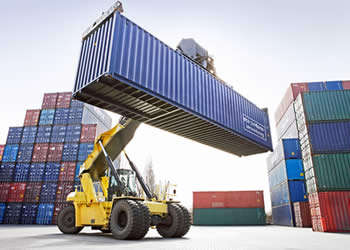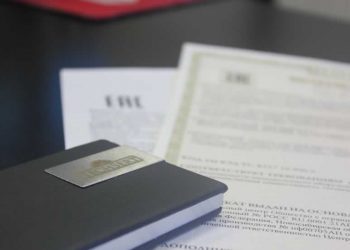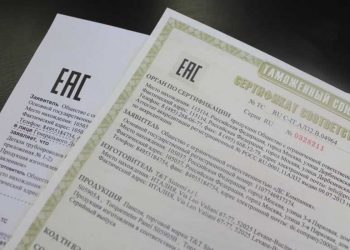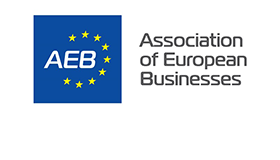Certificate EAC of Conformity for cable
A Certificate EAC of Conformity for cable serves as an official attestation, confirming that the specific cable product adheres to the requirements stipulated by current standards TR CU, whether those are the established GOST norms or prevailing technical regulations. The possession of such a certificate is not merely a formality; it plays a vital role in bolstering trust and confidence, both in the inherent quality and safety of the cable itself and in the reliability and reputation of its manufacturer. In a competitive market, this certification acts as a powerful differentiator, assuring potential customers and stakeholders that the product has undergone rigorous evaluation and meets recognized benchmarks.
The process of certifying cable products is firmly grounded in the legal framework of the Russian Federation, primarily governed by the Federal Law “On Technical Regulation.” This legislative act serves as the cornerstone of the national quality control system, providing the overarching principles and procedures for conformity assessment across various industries, including the manufacturing of electrical cables. Compliance with this law is paramount for ensuring the safety, performance, and interoperability of cable products intended for use within Russia.
It is important to note that the vast majority of cables manufactured and distributed are subject to mandatory conformity assessment within the GOST R system. This mandatory requirement underscores the critical role that cables play in various infrastructure and industrial applications, where safety and reliability are of utmost importance. The mandatory safety assessment applies to a diverse range of cable types, including, but not limited to:
- Suspended flexible multi-core cables: These cables, designed for applications requiring flexibility and movement, such as in cranes, hoists, and other mobile equipment, undergo stringent evaluation to ensure their mechanical strength, electrical integrity, and safety under dynamic operating conditions.
- Cables with heat-resistant insulation made of ethyl vinyl acetate (EVA) rubber: Specifically designed for environments where elevated temperatures are a concern, these cables with specialized insulation materials are tested for their ability to maintain their electrical and physical properties under thermal stress, ensuring safe and reliable operation in demanding applications.
- Power cables for non-stationary installation: These cables, intended for temporary or portable power supply applications, are assessed for their flexibility, durability, and resistance to mechanical damage, ensuring safe power distribution in non-permanent setups.
- Power cables with paper or plastic insulation, intended for fixed installation and rated for voltage from 1 kV to 35 kV: These high-voltage cables, crucial for the transmission and distribution of electrical power in stationary installations, undergo extensive testing to verify their insulation integrity, current-carrying capacity, and safety features under high electrical stress.
- Other power cables rated for voltage up to 1 kV, intended for fixed installation: This category encompasses a wide array of low-voltage power cables used in various building wiring and industrial applications. Certification ensures their electrical safety, conductor quality, and insulation properties for reliable power distribution. Notably, a cable certificate is also required for specific types such as control cables, which are used for transmitting control signals and data, and control cables with rubber or plastic insulation, highlighting the importance of conformity assessment even for non-power carrying cables that are critical for system operation and safety.
To understand the scope of cable products, it is helpful to define what constitutes a cable. Typically, a cable consists of one or more cores, or electrical conductors, that are individually insulated to prevent short circuits and ensure electrical safety. These insulated conductors are then usually enclosed within an outer protective layer known as a sheath, which provides mechanical protection against abrasion, moisture, and other environmental factors.
The modern world relies on an extensive array of cables designed for highly specialized applications across virtually every facet of human activity. Despite this vast diversity, cables can be broadly categorized based on their primary function and intended use. Some of the main types include:
- Power cables: These cables are specifically designed for the transmission and distribution of electrical energy, ranging from low-voltage household wiring to high-voltage power transmission lines.
- Control cables: These cables are used to transmit control signals and data between different components of a system, often found in industrial automation, robotics, and process control applications.
- Communication cables: Intended for wired communication and alarm systems, these cables facilitate the transmission of voice, data, and signals in telecommunications, networking, and security systems.
- Optical cables: Utilizing light pulses to transmit data, optical cables offer high bandwidth and are essential for modern high-speed internet, telecommunications, and data networks.
- Radio frequency (RF) cables: These specialized cables are designed to transmit high-frequency electrical signals efficiently, commonly used in radio communication, broadcasting, and microwave applications.
Beyond their area of application, cables can also be distinguished by a variety of other characteristics, including the presence and type of insulation materials used (such as PVC, polyethylene, rubber, or cross-linked polyethylene), the presence and type of shielding (to protect against electromagnetic interference), the number of individual conductive cores within the cable, the material from which the cores are made (typically copper, aluminum, or optical fiber), the degree of flexibility of the cable, and various other design parameters tailored to specific performance requirements and environmental conditions.
The procedure for obtaining a cable certificate in the GOST R system typically involves a systematic and well-defined series of steps to ensure thorough evaluation and compliance. These steps generally include:
- Submission of an application: The process commences with the manufacturer or supplier submitting a formal application for certification. This application is carefully reviewed by the certification body, which then makes a decision regarding the feasibility and conditions of issuing a certificate of conformity. This initial decision is crucial as it outlines all the essential aspects of the certification process, including the applicable certification scheme (which dictates the extent of testing and assessment), a list of accredited laboratories authorized to conduct the necessary product testing, the specific regulatory documents and GOST standards against which the product will be evaluated for compliance, the requirement (if any) for an inspection of the manufacturing enterprise to assess its quality management systems and production processes, the detailed procedure for selecting representative samples of the cable products for testing, the required number of samples to ensure statistical validity, and a comprehensive list of all the supporting documents that the applicant must provide to facilitate the examination and ultimately receive the certificate.
- Selection and identification of cable product samples: Once the application is accepted, representative samples of the cable products intended for certification are carefully selected according to the established sampling procedures outlined in the decision on the application. These samples are then meticulously identified and documented to ensure traceability throughout the testing process. Proper sample selection is critical to ensure that the testing results are representative of the entire batch or production run of the cable.
- Testing of samples: The selected cable samples are then subjected to a comprehensive battery of tests in accredited laboratories. These tests are designed to evaluate the cable’s performance characteristics, safety features, and compliance with the relevant GOST standards and technical regulations. The specific tests conducted may vary depending on the type and intended application of the cable, but they typically include assessments of electrical properties (such as resistance, insulation resistance, and voltage withstand), mechanical properties (such as tensile strength, elongation, and flexibility), thermal properties (such as temperature rating and resistance to heat and cold), fire safety characteristics (such as flame propagation and smoke emission), and durability under various environmental conditions.
- Assessment of production (if necessary): Depending on the chosen certification scheme and the nature of the cable product, an assessment of the manufacturing facility where the cables are produced may be conducted. This assessment involves an audit of the manufacturer’s quality management system, production processes, and quality control procedures to ensure that the manufacturing processes are consistently capable of producing cable products that meet the specified requirements. This step is particularly important for ensuring ongoing conformity and the reliability of the certified products over time.
- Analysis of test results and issuance of a certificate: After the completion of all the required tests and, if applicable, the assessment of production, the certification body meticulously analyzes the results. A Certificate of Conformity is issued only if the thorough inspection of the product samples and the assessment of the production processes reveal no significant violations of production technology or any instances of the product’s non-compliance with the stipulated GOST requirements or current technical regulations. This final step signifies that the cable product has successfully met all the necessary criteria and is deemed to conform to the applicable safety and quality standards, thereby granting the manufacturer the right to market and distribute the certified cables.
TechSert Group, thanks to its team of high qualify professionals, helps companies in more than 70 countries to prepare all the necessary documentation and procedures to attain Gost and EAC certifications. Furthermore it can rely on its in-house certification body to assure tje highest level of quality at every step of the certification process.



















